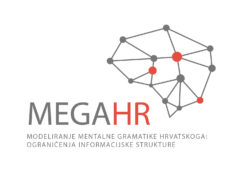What is the form of the information that is transferred in language processing?
Ray Jackendoff
Tufts University/MIT
The broadest goal of linguistic theory is to develop an integrated theory of language and its place in the mind/brain, including accounts of linguistic representations, language processing, language acquisition, the innate basis that makes language acquisition possible, and the character of neural computation such that it can instantiate all of these.
The present talk focuses on the character of linguistic representations, i.e. the form of knowledge of language and of the information that is transferred in language processing. I will contrast the syntactocentric architecture of mainstream generative grammar, in which semantic and phonological representations are parasitic on syntactic representations, with a parallel architecture, in which semantics and phonology are independent sources of combinatoriality, linked to syntax and each other through interface principles (Jackendoff 1997, 2002; Culicover and Jackendoff 2005; Jackendoff and Audring 2020). The talk will review an extensive series of in-principle and empirical arguments that favor the parallel architecture’s account of the relation between semantics and syntax over that of mainstream generative grammar. The outcome is a syntactic component that is far leaner and less powerful – but still non-negligible. It will be argued that this conclusion moves us closer to the goal of integrating linguistic theory.
Culicover, Peter W., and Ray Jackendoff (2005). Simpler Syntax. Oxford University Press.
Jackendoff, Ray (1997). The Architecture of the Language Faculty. MIT Press.
Jackendoff, Ray (2002). Foundations of Language. Oxford University Press.
Jackendoff, Ray, and Jenny Audring (2020) The Texture of the Lexicon. Oxford University Press.
546 total views, 1 views today
This post is also available in:  Hrvatski (Croatian)
Hrvatski (Croatian)


